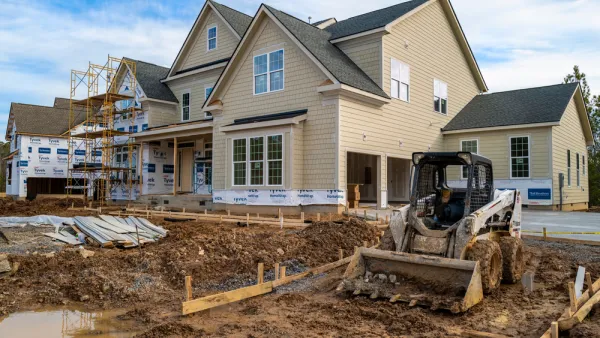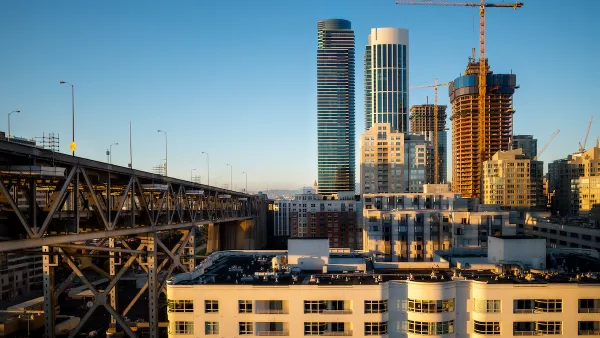Explore strategies for urban planners to manage and mitigate the impact of inflation on city development projects.

Rising costs in urban development are becoming a significant challenge due to inflation, global supply chain disruptions and increasing demand for raw materials. From skyrocketing fuel prices to rising labor expenses, these economic factors put immense pressure on budgets and timelines.
For urban planners, addressing these challenges safeguards the viability of projects that directly impact communities. Without proactive strategies, delays, budget overruns or cancellations can derail critical initiatives and leave cities struggling to meet growing demands. Understanding the root causes and taking strategic action keeps projects on track while ensuring long-term benefits.
The impact of rising costs on urban development
Inflation directly drives up material, labor and operational costs, creating significant challenges for development projects. As inflation stays high, typically above the federal target of 2 percent to 2.5 percent — reaching 3.5 percent to 3.8 percent in 2024 — workers demand more generous wage increases to keep up with rising living expenses. Employers, in turn, pass these higher labor costs on by raising prices for goods and services, such as construction materials and transportation.
These escalating liabilities can result in budget overruns and project delays or cancellations. When improvements stall, the long-term implications for communities are severe, including reduced economic growth and unmet housing demands. Urban planners must manage these cost pressures to deliver sustainable and impactful development.
Practical strategies to mitigate inflation effects
Inflation can significantly disrupt development projects, so planners must adopt proactive strategies to stay ahead. Here’s how urban planners can mitigate the effects of inflation and maintain momentum.
- Implement advanced cost forecasting: Use predictive modeling and market analysis to anticipate inflation trends and adjust budgets accordingly.
- Adopt phased development plans: Break large projects into minor, manageable phases to spread out costs and adapt to economic changes.
- Leverage value engineering: Focus on redesigns with cost-effective materials and methods that maintain quality while lowering expenses.
- Build public-private partnerships: Collaborate with private entities to share financial burdens and secure additional funding sources.
- Maximize technology: Virtual models like digital twins simulate infrastructure changes and predict their impact before implementation. Such tools can optimize designs, identify potential cost-saving measures and reduce risks.
- Focus on long-term sustainability: Prioritize energy-efficient designs and sustainable practices to reduce operational costs over time.
These strategies and innovative technologies can minimize the impact of inflation and ensure on-time, on-budget project completion.
Importance of continuous financial monitoring and adjustment
Regular budget reviews are fundamental to successful urban development. They help planners spot financial issues early and take corrective action before costs spiral out of control. These audits ensure projects stay on track toward their goals, maintaining momentum and delivering expected results. For governments, transparent budget monitoring also builds public trust by showcasing accountability and fiscal responsibility.
Planners can gain instant insights into spending patterns and cash flow with modern tools like real-time financial tracking software, cloud-based analytics, and AI-driven systems. These technologies streamline monitoring and enable data-driven decisions, ensuring initiatives stay financially sustainable and aligned with community expectations.
Exploring alternative funding sources
Urban planners have various funding alternatives to counter rising costs and keep projects moving forward. Federal and state grants ease financial burdens on municipalities while fostering stronger partnerships with higher levels of government.
Meanwhile, green bonds offer an innovative way to fund sustainable initiatives and attract eco-conscious investors. International aid programs can provide additional resources for large-scale infrastructure or recovery projects, particularly in underserved areas.
For smaller initiatives, community-driven crowdfunding has proven effective because it allows residents to support local outputs and strengthen community involvement. Additionally, tax incentives and credits attract private investors, offset costs and create mutually beneficial partnerships. These funding sources can secure the financial stability needed to bring transformative projects to life.
Building resilient urban projects through smart strategies
Strategic planning and financial agility are essential for urban planners to overcome rising costs and deliver successful projects. Embracing these approaches lets them ensure viability, adapt to economic challenges, and meet their communities’ needs.

National Parks Layoffs Will Cause Communities to Lose Billions
Thousands of essential park workers were laid off this week, just before the busy spring break season.

Retro-silient?: America’s First “Eco-burb,” The Woodlands Turns 50
A master-planned community north of Houston offers lessons on green infrastructure and resilient design, but falls short of its founder’s lofty affordability and walkability goals.

Delivering for America Plan Will Downgrade Mail Service in at Least 49.5 Percent of Zip Codes
Republican and Democrat lawmakers criticize the plan for its disproportionate negative impact on rural communities.

Test News Post 1
This is a summary

Test News Headline 46
Test for the image on the front page.

Balancing Bombs and Butterflies: How the National Guard Protects a Rare Species
The National Guard at Fort Indiantown Gap uses GIS technology and land management strategies to balance military training with conservation efforts, ensuring the survival of the rare eastern regal fritillary butterfly.
Urban Design for Planners 1: Software Tools
This six-course series explores essential urban design concepts using open source software and equips planners with the tools they need to participate fully in the urban design process.
Planning for Universal Design
Learn the tools for implementing Universal Design in planning regulations.
EMC Planning Group, Inc.
Planetizen
Planetizen
Mpact (formerly Rail~Volution)
Great Falls Development Authority, Inc.
HUDs Office of Policy Development and Research
NYU Wagner Graduate School of Public Service






























